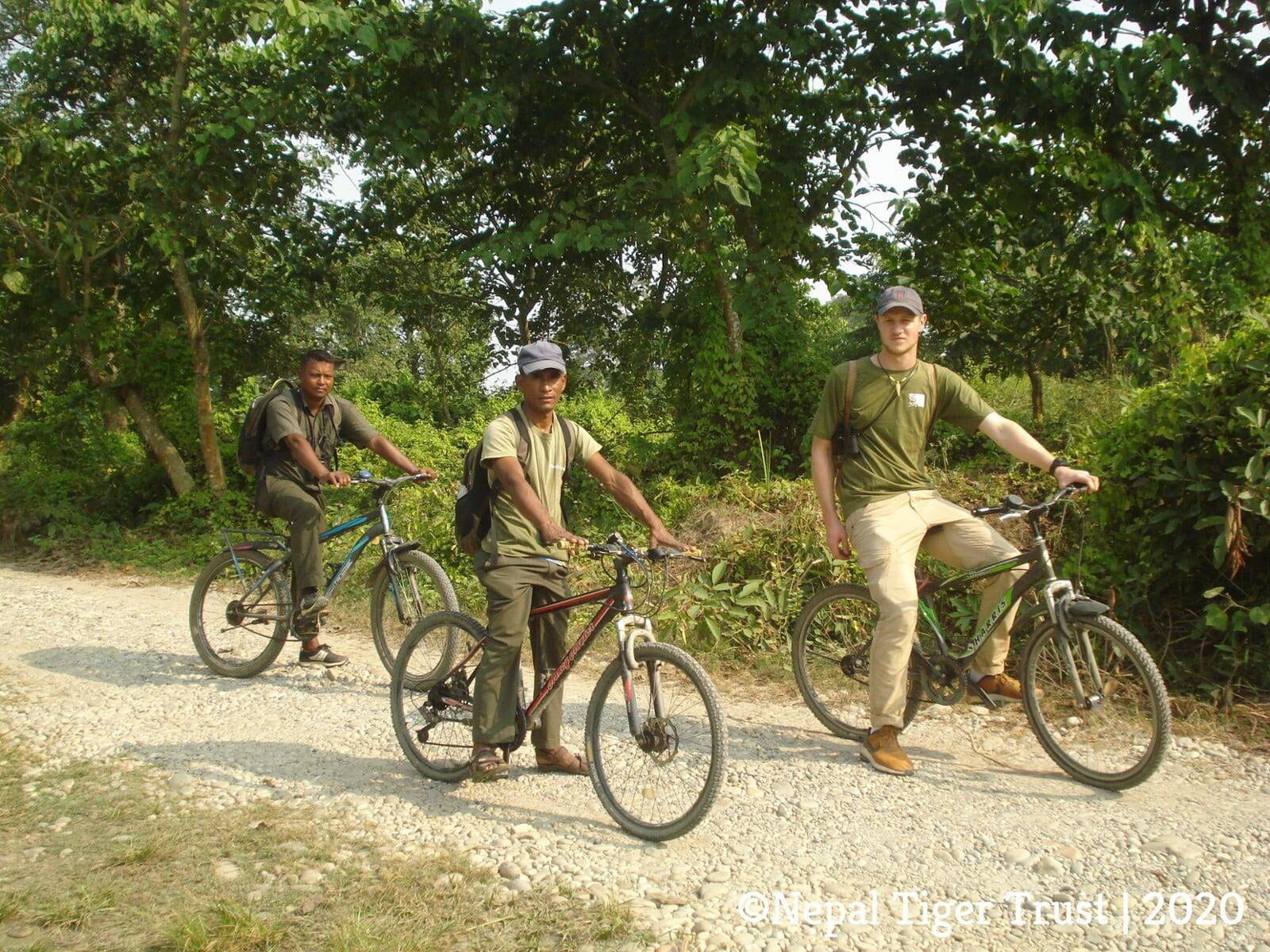From Quirin Linseisen,
Munich, Germany
As a zookeeper I’m always interested in the way animals behave in their habitat and how human beings influence it. The decline of any species is mostly caused by human beings influence to the wilderness. There are many reasons people destroy nature and that leads to habitat loss. Especially predators such like the tiger in Asian countries are vulnerable to this change. They need to hide and seek to get their prey otherwise they’ll just starving and one day disappear.

Walking by feet or using the bicycle for the daily trips into the jungle and grassland was the gentlest way for nature and wildlife. This called jungle is a buffer zone for animals between human beings and the Chitwan Nationalpark. Actually the river Rapti is the official border between it but wildlife also pass this river. The buffer zone once was the community forest for nearby people. A few animals got pushed away from this territory because of the habitat loss. In these days the areas were reforested in order to get the wildlife more space to roam and recover their once habitat.

It was simply stunning to see this intact nature and its wildlife. I learned a lot about relationships of plants, wildlife and also human beings living next to it. Also coexistence of diverse nationalities, cultures and religions in Nepal was an impressive experience for me in everyday life during my stay. I have had many different experiences like conversations with many people and have integrated some of them into my lifestyle.
So as a conclusion I can say it’s really worth to visit Nepal and support their developing work with wildlife and nature.
